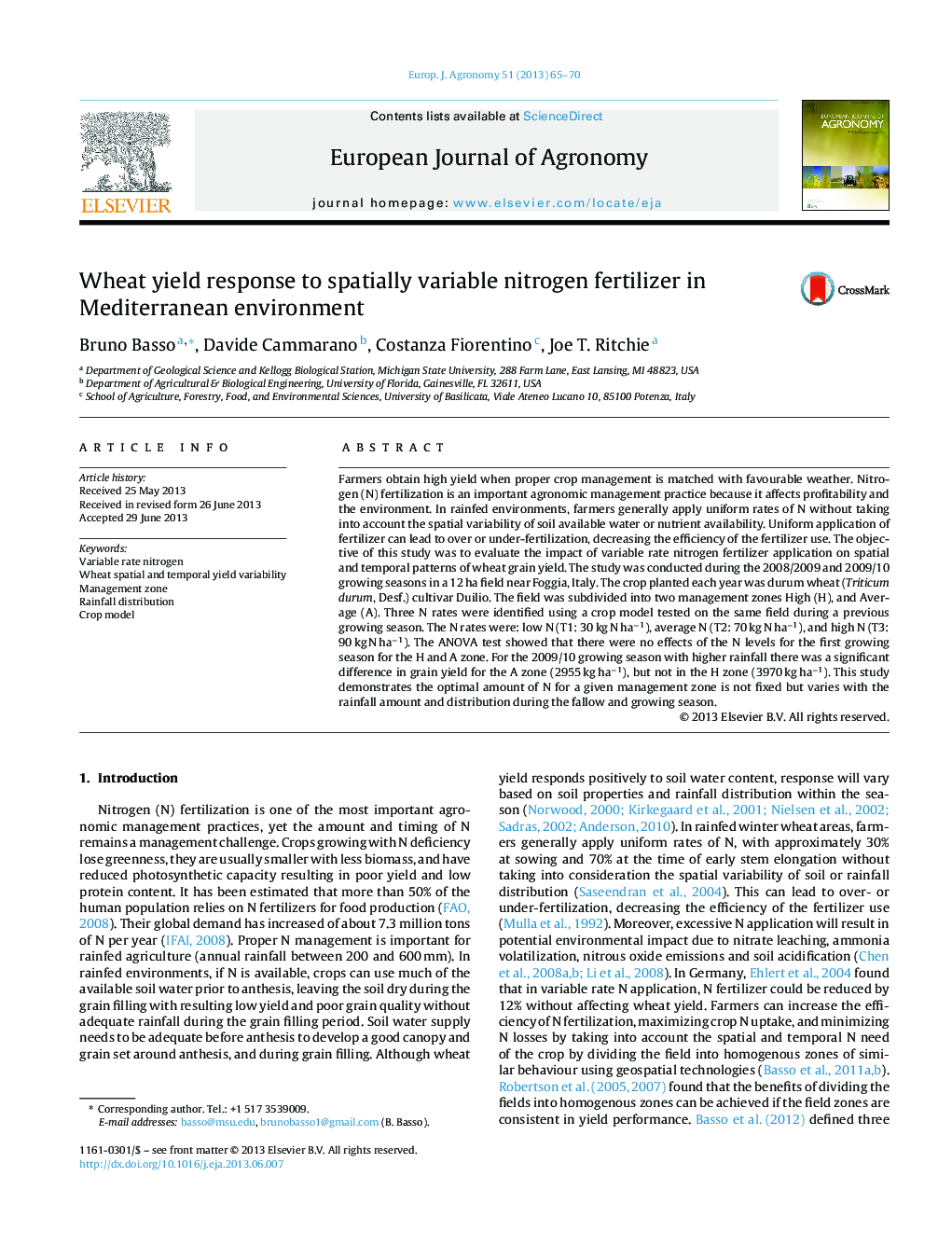| کد مقاله | کد نشریه | سال انتشار | مقاله انگلیسی | نسخه تمام متن |
|---|---|---|---|---|
| 4508959 | 1624475 | 2013 | 6 صفحه PDF | دانلود رایگان |

• Spatial and temporal patterns of wheat grain yield were quantified.
• Optimal amount of N fertilizer is not fixed but varies with the rainfall.
• N fertilizer needs to be tactically applied and varies over space and years.
Farmers obtain high yield when proper crop management is matched with favourable weather. Nitrogen (N) fertilization is an important agronomic management practice because it affects profitability and the environment. In rainfed environments, farmers generally apply uniform rates of N without taking into account the spatial variability of soil available water or nutrient availability. Uniform application of fertilizer can lead to over or under-fertilization, decreasing the efficiency of the fertilizer use. The objective of this study was to evaluate the impact of variable rate nitrogen fertilizer application on spatial and temporal patterns of wheat grain yield. The study was conducted during the 2008/2009 and 2009/10 growing seasons in a 12 ha field near Foggia, Italy. The crop planted each year was durum wheat (Triticum durum, Desf.) cultivar Duilio. The field was subdivided into two management zones High (H), and Average (A). Three N rates were identified using a crop model tested on the same field during a previous growing season. The N rates were: low N (T1: 30 kg N ha−1), average N (T2: 70 kg N ha−1), and high N (T3: 90 kg N ha−1). The ANOVA test showed that there were no effects of the N levels for the first growing season for the H and A zone. For the 2009/10 growing season with higher rainfall there was a significant difference in grain yield for the A zone (2955 kg ha−1), but not in the H zone (3970 kg ha−1). This study demonstrates the optimal amount of N for a given management zone is not fixed but varies with the rainfall amount and distribution during the fallow and growing season.
Journal: European Journal of Agronomy - Volume 51, November 2013, Pages 65–70